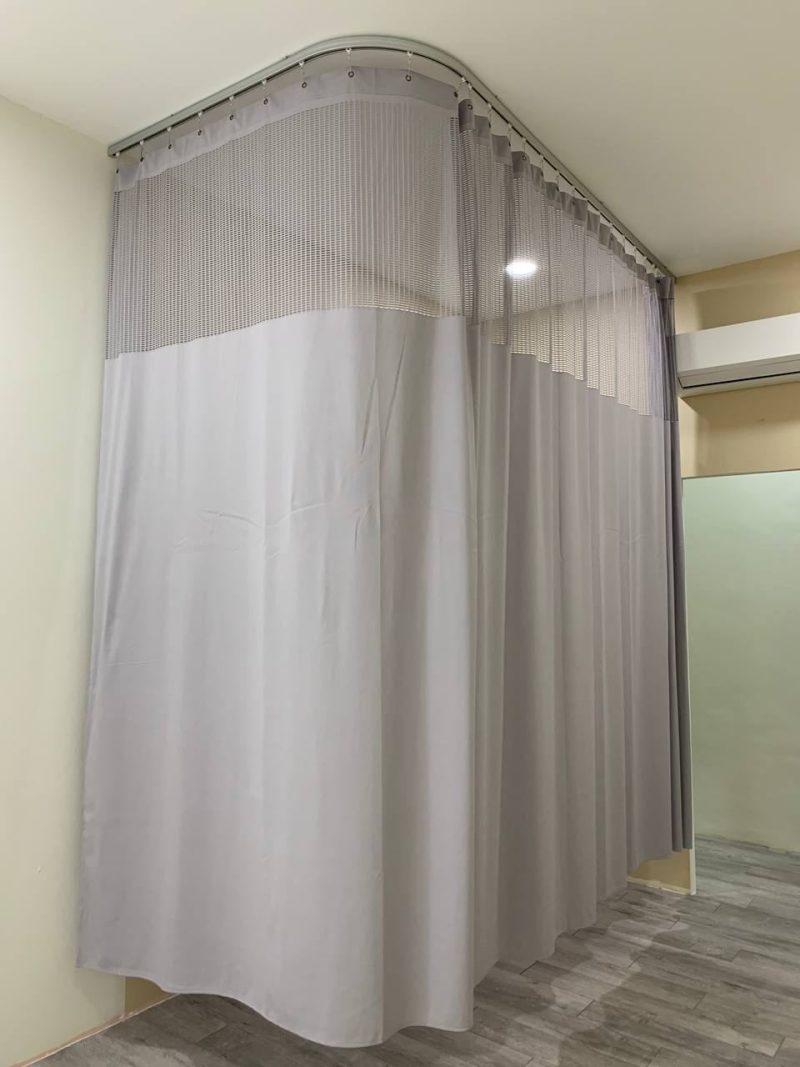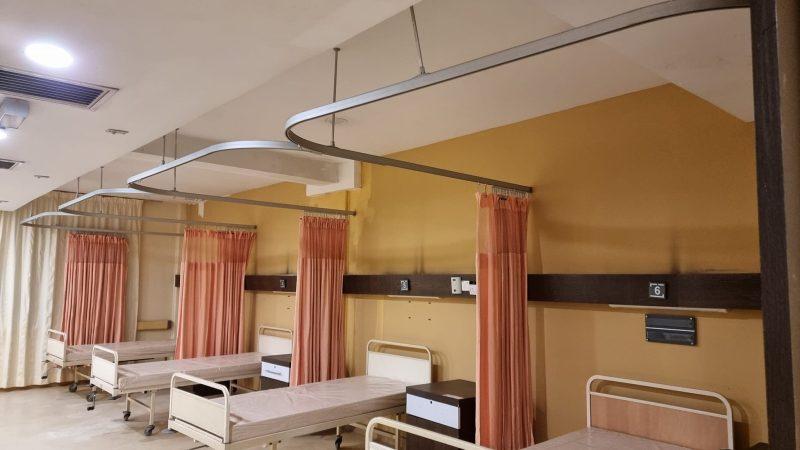1. Material:
– Typically made from durable, fire-retardant fabrics.
– Often include antimicrobial properties to prevent the spread of infections.
– Easy to clean and maintain, with some being machine-washable.
2. Design:
– Available in various colors, patterns, and textures to suit different aesthetic and functional needs.
– Can be customized with different lengths and widths to fit specific spaces.
– Equipped with mesh tops (known as “fire window” or “top window”) to allow sprinkler systems to function correctly in case of a fire.
3. Mounting Systems:
– Hung from ceiling-mounted tracks, allowing them to be easily pulled open or closed.
– Tracks can be straight or curved, depending on the room layout.
4. Accessories:
– Often used with hooks or gliders for smooth movement.
– Can include tie-backs for neatly securing the curtains when not in use.

1. Healthcare Settings:
– Provide privacy for patients in shared rooms.
– Create temporary examination areas in emergency rooms and clinics.
– Used in recovery areas to give patients a sense of personal space.
2. Educational Institutions:
– Used in school nurse’s offices for private consultations or examinations.
– Can create temporary partitions in classrooms or gymnasiums for various activities.
3. Workplaces:
– Create flexible office layouts by dividing open-plan spaces.
– Provide temporary meeting areas or quiet spaces for employees.
4. Laboratories and Research Facilities:
– Separate different workstations or projects to maintain privacy and reduce contamination risks.

1. Privacy:
– Essential for maintaining patient confidentiality in healthcare settings.
– Helps individuals feel more secure and comfortable in various environments.
2. Flexibility:
– Easily movable and adjustable to create or remove partitions as needed.
– Can adapt to different space requirements and layouts.
3. Cost-Effective:
– More affordable than building permanent walls.
– Allows for reconfiguration of spaces without significant expense.
4. Hygiene:
– Antimicrobial fabrics help reduce the spread of infections.
– Easy to clean, ensuring high standards of hygiene are maintained.
5. Safety:
– Fire-retardant materials and mesh tops comply with safety regulations.
– Contribute to overall safety protocols in sensitive environments like hospitals.
1. Environment:
– Choose materials and designs suitable for the specific environment, considering factors like hygiene, aesthetics, and safety.
2. Durability:
– Opt for high-quality fabrics that can withstand frequent use and cleaning.
3. Customization:
– Consider custom sizes and designs to ensure the best fit and functionality for the intended space.
4. Compliance:
– Ensure that the curtains meet relevant safety and health regulations, especially in healthcare settings.
Cubicle curtains are a versatile and practical solution for creating temporary, private spaces in a variety of settings, offering a blend of functionality, privacy, and flexibility.
 Malaysia
Malaysia